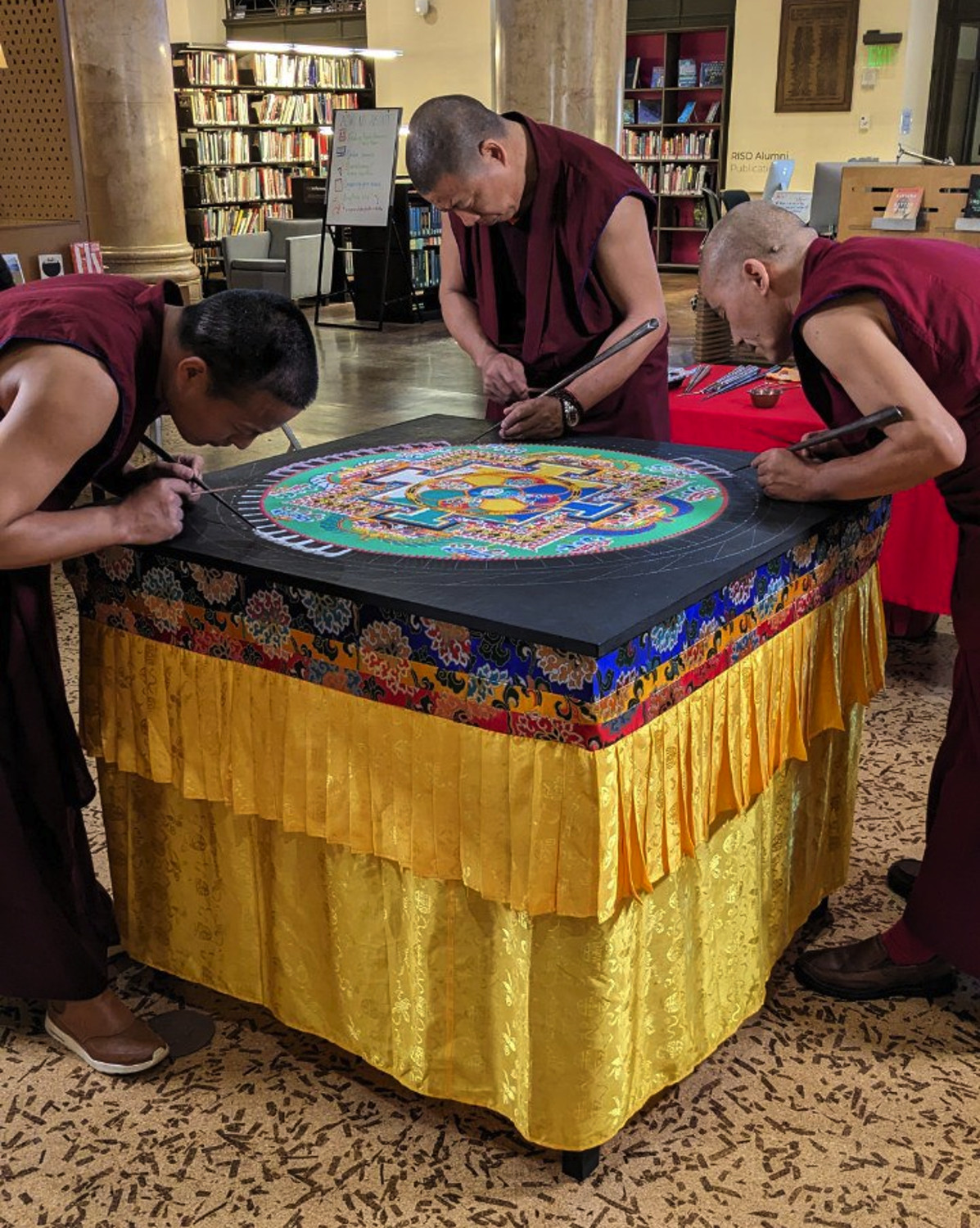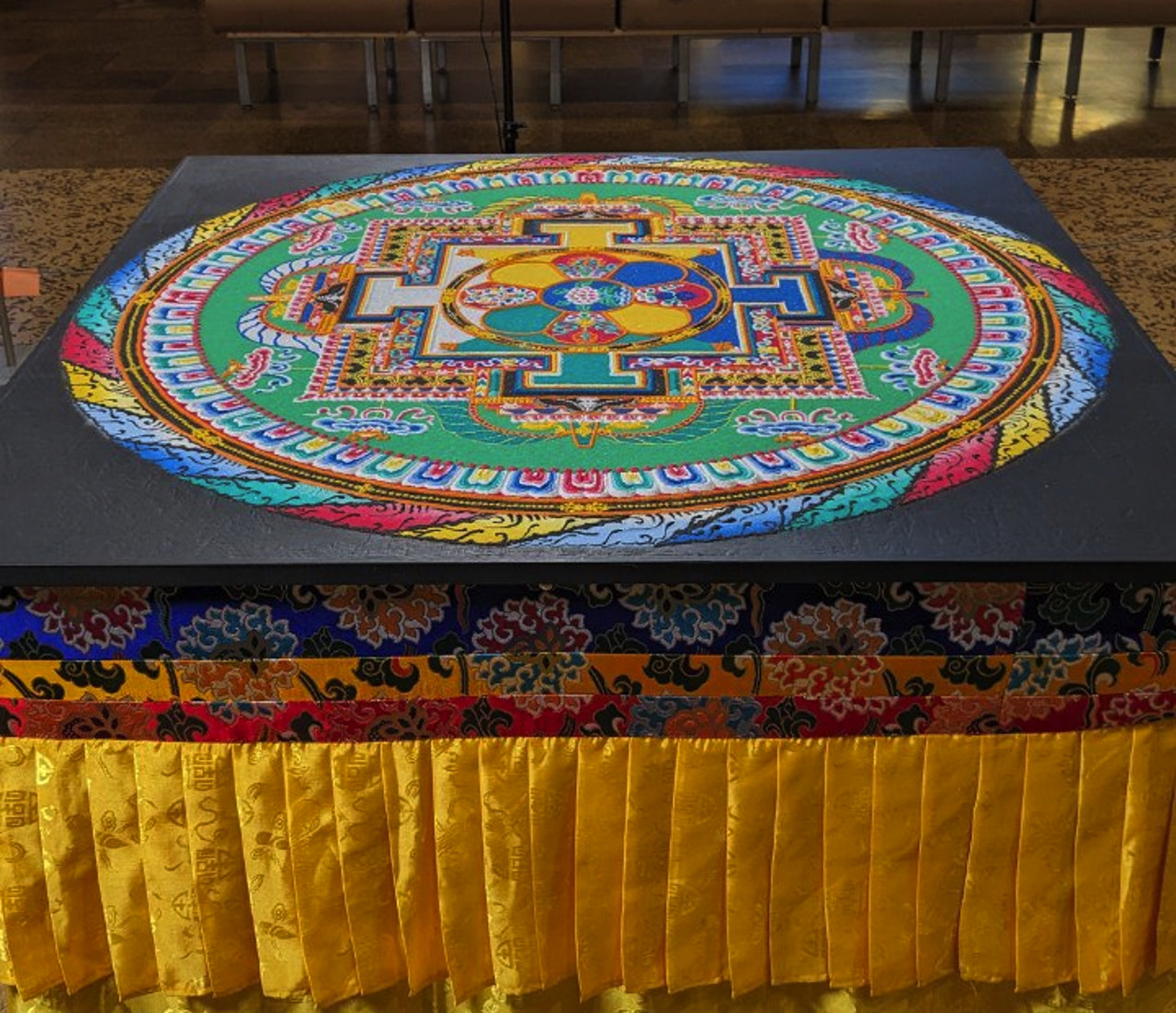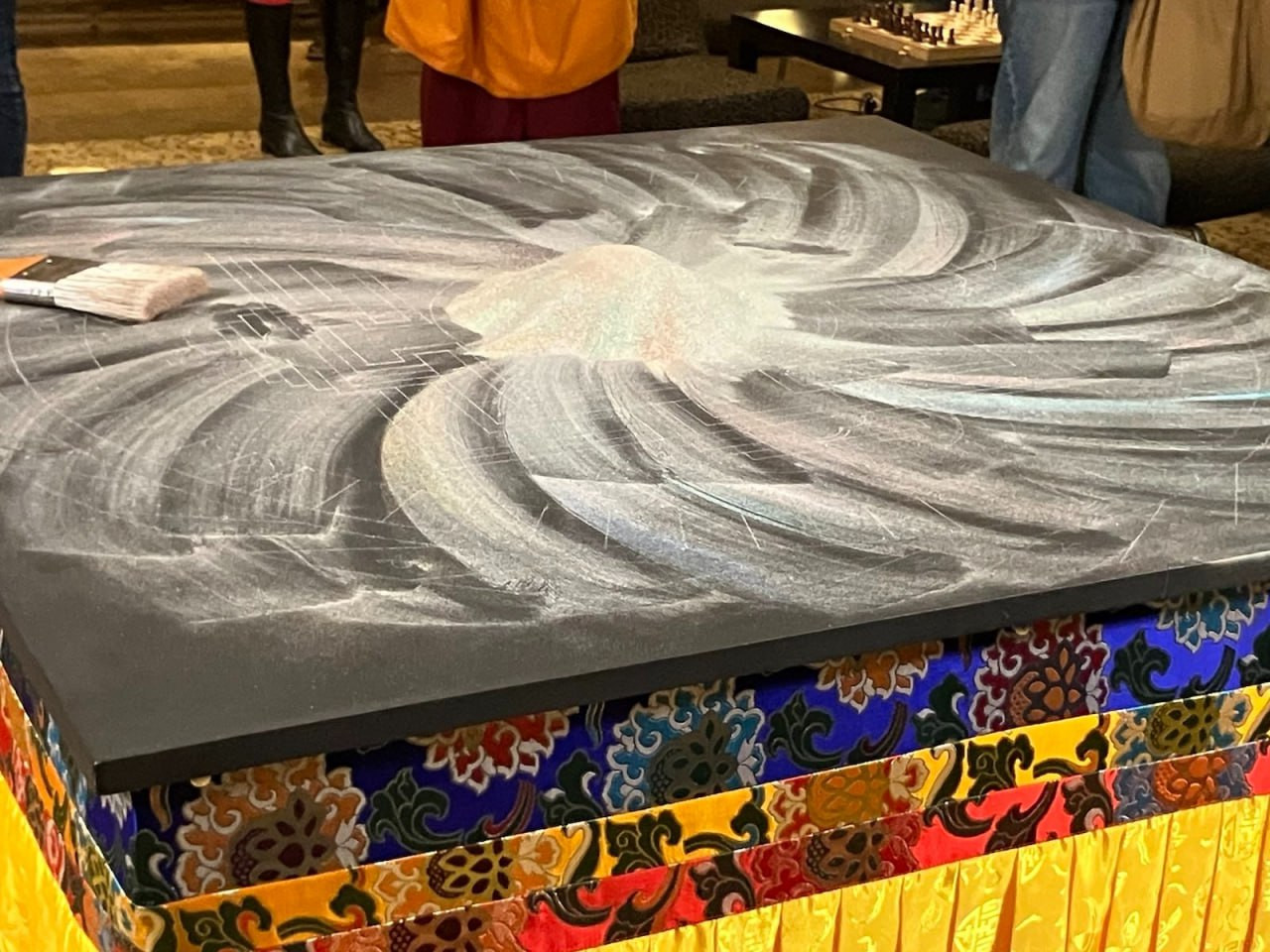Tibetan Sand Painting A potent and beautiful symbol of Impermanence

This week I got to see something very special – the creation of a Tibetan sand painting.
This striking and unique art form uses colored sand to form the images instead of paint.
The paintings themselves are usually Mandalas – stylized religious images suffused with the symbols of Tibetan Buddhism, and are almost always created by monks.
They are often wonderfully intricate and exceptionally beautiful, and typically take days to complete – usually by a team of monks working together.
In fact, this is more akin to performance art than anything else.
For a typical western painter like myself, the act of creation is interesting but not really the focus – the goal is to have a finished work of art which can then be preserved and appreciated by others.
With one of these sand paintings, however, the act of creation itself is what matters – it is seen as a form of devotion and practice, and is accompanied by constant ritual and prayer… basically active meditation.

And most strikingly, once one of these masterpieces is complete, it is deliberately, carefully, and mindfully destroyed.
This destruction – a ceremony they refer to as the Dissolution, is a potent symbol for the impermanence of all things.
Far from being mournful or disturbing, the Dissolution is the very essence of making a sand painting, and was an extraordinarily beautiful act.
I’ve known about these sand paintings for a long time, but this is this is the first time I’d seen one in person – I knew what to expect but I was not entirely prepared for the power and majesty of this ceremony.
The head monk began the Dissolution by cutting into the painting with his Dorje (a small brass scepter representing wisdom), and as he did so the room was positively electric with the energy of the moment… and then all the sand was slowly swept into a grey pile of dust where moments before had been a vibrant colorful painting.
Once the image was dissolved and the ceremony complete, all in attendance were given small bags of the sand, to take some of the potency of the Mandala with us out into the wider world.

A few times during the ceremony I thought about the relationship between what I was seeing and the kind of art I make.
Still life is certainly not Tibetan religious art – the means and the ends are different.
Yet, there is something of a common thread.
Still life – at least the way I think about it and practice it – has the ability to create something like a meditative experience – to stop time for the viewer, make the world fall away, and let them experience the beauty of that one moment the artist has captured.
And I think that is very much an experience worth having… and sharing.
Note: The “brushes” used in sand painting are fascinating. They’re actually conical metal tubes – a wide opening on one end and a very narrow opening on the other. The sand is poured into the wide end, and the monk then taps or rubs the tube to make the sand flow out of the narrow end at the desired rate – often just a grain or two at a time. This level of control obviously involves a great deal of skill and mastery.